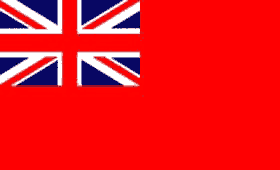Colonial Wars |
American Wars |
Link To This Page — Contact Us —
The Battle of St. Eustatius
February 3, 1781 at St. Eustatius, West Indes
 |
||||||
|
Throughout the War for American Independence, St. Eustatius continued its illegal trade. In an attempt to avoid notice, gunpowder was often transported in barrels marked tea, rice, molasses and the like. While there may have been some sympathy for the cause, the trade was also quite profitable, for the Dutch made as much as a 120% profit on gunpowder.
The tension caused by such breeches of the offical Dutch stance on neutrality, and the reality of it, finally came to a head on the 20th of December, 1780. Britain declared war on Holland, and yet another major European power entered the world-wide war we call the American Revolution.
The fact that Statia supplied so much of the needed material to troops under George Washington, lead to it being chosen as the first Dutch target of the British Caribbean fleet. Admiral Rodney sent Rear Admiral Sir Samuel Hood's squadron of seven ships to encircle the island.
Statia had not yet even learned of its entrance into war. The British banked on this fact, and on Saturday, the 3rd of February 1781, the fleet anchored around 3 p.m. The British had, along with around 15 ships of the line, about 3,000 troops ready to invade the island. Statia, on the other hand, had about 60 regular garrison troops stationed there, along with some all but useless civilian militia. There were, however, a large number of American merchant seamen on the island, some say as many as 2,000, but they were not equipped or trained for battle.
In addition to the small number of military troops, there were 82 mounted artillery pieces on Statia at the time of the British arrival. The largest British ship alone, the Barfleur, carried 90 guns. All told, the British mounted over 300 cannon on thier warships. Statia's artillery had less of a chance than the Spartans of Leonidas at Thermopylae.
Realizing their vastly superior strength, Admiral Rodney wrote in a letter, that he and General Vaughan, the army commander on the expedition, decided that "in order to save the Effusion of human Blood, thought it necessary to send the Dutch Governour [a] Summons", via Lieutenant-Colonel James Cockburn of the 35th Regiment and one other officer, to which the Dutch quickly surrendered the island.
The number of American ships that traded at the port was readily apparrent. Within a very short time, the British had captured more than 150 ships who unknowingly sailed into port. On the beach, Rodney found warehouses packed full. He wrote back to England that "All the Magazines and Storehouses are filled, and even the Beach covered with Tobacco and Sugar". The magazines he found to be "filled with Provisions, Naval and other Store, intended for the use of his Majesty's Enemies and Rebel Subjects". Many of the supplies, Rodney was furious to learn, were actually being sold to the Americans by British merchants on nearby St. Kitts , where the British maintained a large fortification called Brimstone Hill. These warehouses, Rodeny declared, had "been more detrimental to England than all the forces of her enemies".
All the stores and warehouses on the island were immediately closed, and soliders were stationed everywhere. Rodney continued on his Caribbean campaign, and left Statia under the capable hands of General Vaughan. Vaughn, however, died soon after, and is now buried on the island.
